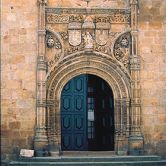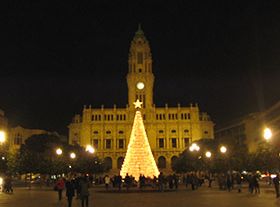Parque Arqueológico do Vale do Côa

Archaeology
Through the imposing mountains of the north-eastern region of Portugal, where in early spring the almond trees are in full blossom and in autumn the vines are covered with fiery red leaves, there runs into the River Douro, from the south, a tributary whose name is now known all around the world. This is the River Côa, whose vast valley contains many examples of a long-flourishing artistic cycle. Millennium after millennium, the rock formations that line the river banks have been converted into panels covered with thousands of engravings bequeathed to us by our ancestors' creative impulses.
Dating back to the beginning of the Upper Paleolithic Age, these open-air "panels" bear witness to an artistic vitality and mastery that have brought us into touch with 25,000 years of past time. This extensive art gallery provides us with a record of the Neolithic period and the Iron Age, and then transports us in one fell swoop across two thousand years of history to settle in the Modern Era with its religious representations, names, dates and even, only a few decades ago, some figures drawn by the children of a local miller.
Almost all the motifs are engraved in the rock, presenting us with themes, techniques and conventions common to other contemporary works in Western Europe, such as those found hidden in the French-Basque caves in the nineteenth century and which, by the turn of the century, were already being referred to as great art. It was, however, not until the end of the twentieth century that we were suddenly to see the art of the Côa valley burst forth from the hidden recesses of the caves into the open air, where the daily and seasonal interplay of light and shade simultaneously exposes and hides it in a fantastic game of revelation and concealment.
As the river wends its way from south to north towards the River Douro, the last seventeen kilometres of its course form a valley that recently became Portugal's first archaeological park. Since December 2, 1998, it has been included in the list of monuments classified by UNESCO as World Heritage. The subsequent simultaneous creation of the Côa Valley Archaeological Park and the National Rock Art Centre, both of which have offices in Vila Nova de Foz Côa, represented the culmination of an important government decision and one that will clearly have a crucial effect on the status of rock art, archaeology and heritage in Portugal at various levels.
All of this magnificent group of open-air engravings, which finally lays to rest the old myth of rock art being forever enclosed in caves, can be admired in organised visits conducted by specialist guides, although it is stressed that all visits must be booked in advance.
The three centres that can be visited are: Canada do Inferno, which was the first group of engravings to be discovered, very close to Vila Nova de Foz Côa, Ribeira de Piscos, at Muxagata, and Penascosa, close to the village of Castelo Melhor.
Situated in the very heart of the archaeological park, the Quinta da Ervamoira provides a complementary service for visitors to the engravings. Here there is a museum that gives a full description of the region and its ancestral customs, without forgetting the extremely ancient bread-making cycle and the traditional features of Douro wine production, yet another of this region's most undeniable riches.
5150-610 Vila Nova de Foz Côa
9 am-1 pm / 2 pm - 6 pm (Every day)






 Explore
Explore 
 Remember and Share
Remember and Share 


